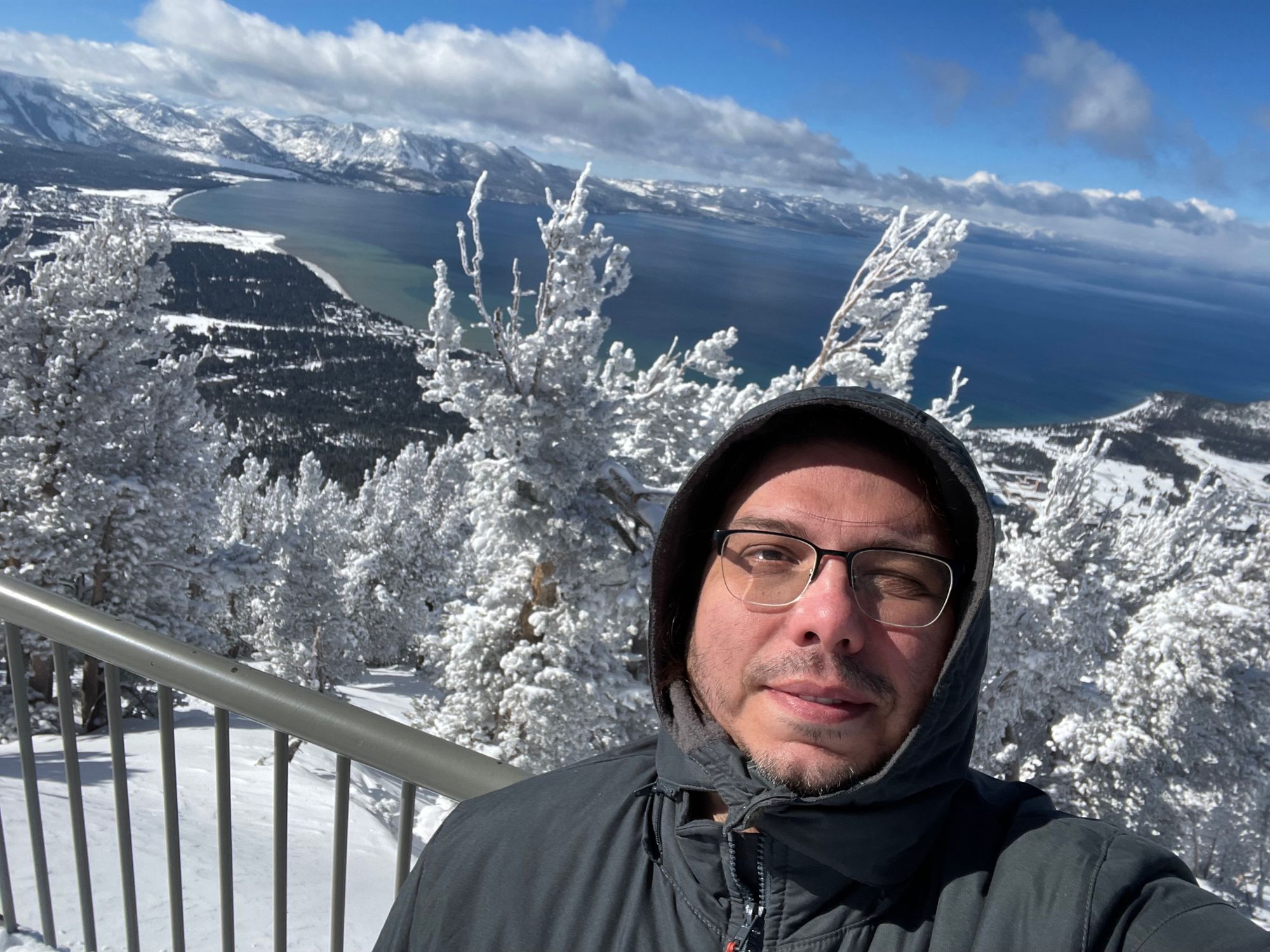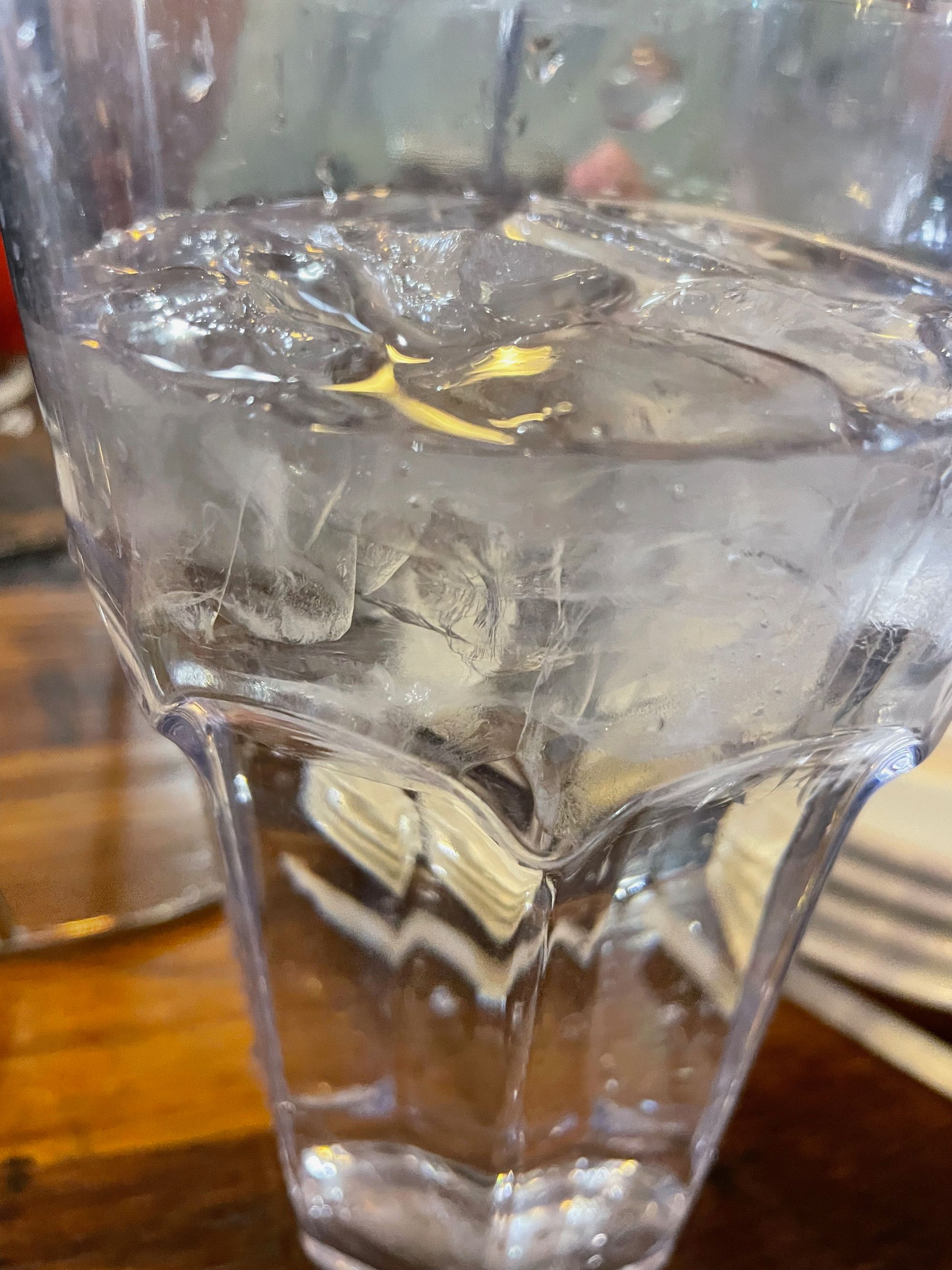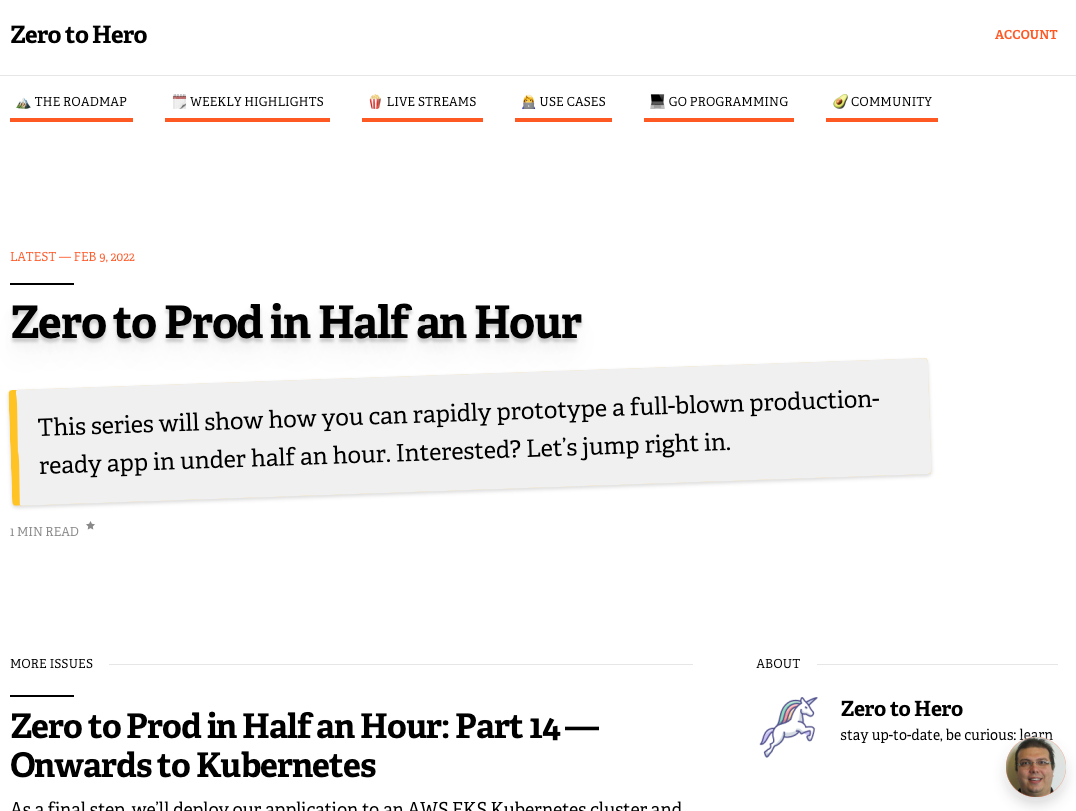Welcome to the 20th issue of Zero to Hero Weekly.
It has been a while since the last update; and as always, I have been busy with a lot of things. Here are some highlights.
OpsBeacon is Back on Track 🤘
Suppose you’ve been following Zero to Hero since the beginning. In that case, you’ll remember that with a group of fellow engineers, we’d started OpsBeacon to help operations and level-1 responders #sleepmore.
That was around September 2021. Then life got in the way, and we had to pause the development of OpsBeacon for a while.
Guess what? We are back on track, baby! There is a horde of things on our roadmap, and it will be a hell of a ride 🤘.
That means you’ll hear me talking more about OpsBeacon, and mentioning more OpsBeacon use cases in the Zero to Hero live streams.
Life is Better at the Slopes
Last week, we were at South Lake Tahoe. The plan was to stay there for a few days; yet, we found ourselves in the middle of a snowstorm and had to extend our stay for a few more days.

We’ve had a lot of fun, and suffice it to say, the kiddos had enough snow for a year 🙂.

Would You Like Some Water In Your Ice?
It was snow everywhere. Ice cold weather. And since this is America, they still serve iced water ❄️ when the temperature is -20 degrees Celcius outside. Or, in this case, it is “watered ice” instead 🙂.

Bye Bye EKS 👋
I terminated the EKS cluster that I was experimenting with on other news. You can watch the VOD about the entire process here on Twitch.
But, why so? Because I only have a handful of microservices, and paying Amazon around $90 every month just for a Kubernetes control plane is not worth it.
From this point on, I’ll go old school and use an Application Load Balancer and some good old EC2 instances fronted by NGINX reverse proxies and tie everything together with scripts. It will be a “poor man’s orchestration solution” that won’t tear a hole in your pocket if you will. And I’ll, of course, write and live stream about it on the go.
More Live Streams Are Coming Up
I upgraded my streaming setup, and I plan to do regular streams, mostly at night Pacific time. Follow me on Twitch and get notified whenever I’m online.
Zero to Hero Changes
I’ve updated the navigation a little on the Zero to Hero front, highlighting essential parts that could have been harder to search otherwise.

Here are the links for the interested:
- The Roadmap is where you can find resources to become a better version of yourself.
- Weekly Highlights is an ordered list of these weekly updates that you are reading right now.
- Live Streams take you directly to Twitch, where I’ll be more active, mostly around nighttime pacific time. Join me, and let’s break production together.
Also, if you remember, I was keeping a list of live streams as a separate page. I decided to archive that page, as maintaining it was consuming a disproportionate amount of my time. I’d instead create content than do book-keeping to utilize the opportunity cost of the limited time.
Here are the rest of the links:
- Use Cases are what you can think of as real-life use cases and tutorials. So, if you are looking for a “yet another to-do list app”, or “yet another restaurant finder” that’s not the place 🙂.
- Go Programming has articles related to Go programming, as its name implies.
- Community directly takes you to the Zero to Hero Discord server, where everyone can join.
☝️ That makes things easier to find. Especially when someone is new to the site. That’s good UX.
Zero to Prod in Half an Hour
I have been working on this for the last few weeks, and finally, it is ready for your viewing pleasure.
Zero to Prod in Half an Hour is 14-part video series that I have been creating for a while. The lectures show how to create a full-blown app with identity management, payment gateway integration, business logic, and all and deploy it to a production Kubernetes (EKS) cluster. The total recording time is around half an hour.
The videos are free. If you are a premium member, you can also get learning resources, links, and additional study material to dig in, along with the source code.
At any rate, have fun, and enjoy the content.
Random Thought of the Week
How you frame a problem directly impacts whether you can solve it. That means words are more important than one might think they are. When you pick your words carefully when describing your issue, you’ll have a much better chance of solving it.
If you struggle to generate effective solutions to complicated problems, you might want to change the way you define the problem statement.
Specifically, ask yourself these two questions:
What’s the Subject?
Let’s say that you want to change a feature on an application. If the app is targeted towards an expert audience, then you’ll generate a different solution than an app targeted towards beginners.
How can you measure the problem?
Without metrics and measurement, solving a problem can turn into a futile effort. After all, how can you know you have achieved something if you cannot quantify your achievement.
In your metrics, define what success and failure look like.
For example, “we strive to create as much services as the customer as we can” will lead you to a different solution than “only 20% of our feature set is widely used, and out of that 20%, only 5% generate revenue.”
So next time you are struggling to find a solution, try rewriting the problem statement. You’ll possibly find that a minor change in your wording can lead to a significant shift in your perspective.
Words do matter.
Look What I’ve Found
Here are the things that grabbed my attention this week.
I typically don’t share these anywhere else.
Exclusively hand-picked for you 👌. Enjoy.
soft-serveis a tiny self-hostable Git server.- Pika is an open source color picker app for Mac OS.
trunkis a static analyzer to make your code better, faster, stronger.
Thanks a Lot ❤️
That’s all for this week. Next week, I’ll gather more unique content and resources.
So, until next time… May the source be with you 🦄.


